No products in the cart.
Table of Contents
Did you know that this plant is one among the few that releases oxygen at night instead of day? They are well-known for their purifying properties, as they remove pollutants like formaldehyde and xylene from the air. Because of the shape and edge of its leaves, Sansevieria is also known as “mother-in-law’s tongue” or “snake plant.”
Now, let’s talk about its appearance. The Sansevieria zeylanica is a stemless perennial blooming plant with long, sword-shaped succulent leaves that grow from a rhizomatous base. They have upright, stiff leaves that can grow up to 2.5 feet tall and 1 inch broad.
Bowstring hemp’s dark-green leaves have creamy-white wave-like horizontal patterns across their surface.
Do you want to grow this kind of beauty? We’re here to help you learn how to efficiently care for it. Read below to find out more!
Sansevieria Zeylanica Plant Care Basics

Now that this beauty has introduced itself to you, we will give you valuable tips on how to take care of this beauty. Enjoy!!
Best Potting Mix
This Zeylanica Snake plant will thrive on a sandy loam that drains well. It’s also optimal if the pH of the soil is between 6 and 7.
Perlite, coco coir, pumice, or sand can be mixed with regular or garden soil to create a soil mix. These additions will improve the soil’s drainage capacity. The Zeylanica snake plant also thrives in a potting mix designed for tropical plants, succulents, and cacti.
Pro tip: Root rot can be caused by standing water; therefore, avoid it. When kept in overly damp soil, Sansevieria zeylanica cannot withstand it and will decay.
Watering Needs
This Bowstring hemp doesn’t need to be watered very often. Only when the soil has dried out, should you water it. Watering frequency might be reduced throughout the winter months.
This indoor plant goes dormant in the winter and requires less water. It will demand a lot of water throughout its active growth phase in the spring and summer.

Pro tip: Ensure that any water accumulated in the saucer beneath the pot is discarded and that the plant is never left standing in water or the soil becomes damp.
Lighting
Your best bet for indoor growers is to supply as much light as possible. Year-round exposure to intense direct sunshine, on the other hand, can be excessive. A bright window is a good option. If you keep your Sansevieria zeylanica in low light, it may turn a darker green hue.
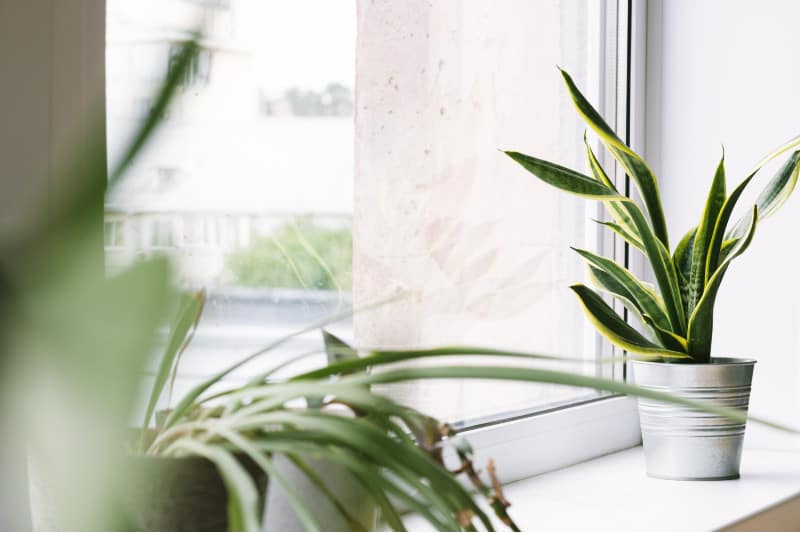
Temperature & Humidity
Extreme temperatures are too much for Sansevieria zeylanica. Additionally, it is a tropical plant that dislikes the cold either. A temperature range of 60 to 75 degrees Fahrenheit (16 to 24 degrees Celcius) is ideal.
The Bowstring plant isn’t particularly hardy in the winter. In cold temperatures, it goes dormant and grows slowly. Leaf damage can occur below 50 degrees Fahrenheit (10 degrees Celcius).
So in winter, it’s preferable to keep your plants inside. In average household humidity, the Zeylanica Snake plant thrives. A pebble tray with water beneath the plant’s container is a fantastic option for indoor growers who are struggling with prolonged conditions of low humidity.
This raises the moisture level in the area around the plant. Avoid humid environments, but if brown tips appear, consider misting regularly.
A damp soil around the plants will add a little extra humidity outside. However, you should avoid overwatering by removing the mulch and soaking it in water before replacing it around the plant.
Fertilizer
The Bowstring hemp is a light feeder that might be harmed by excessive fertilization. During the summer, feed the plant a half-strength of a general-purpose fertilizer once every three weeks. This is an excellent time to perform it throughout the growing season, from spring to late summer.
Pro tip: You can also apply organic fertilizers. Such as cow dung, manure, and worm compost can be used, but only in small amounts. In the potting soil mix, toss in a handful of organic feed.
Propagation
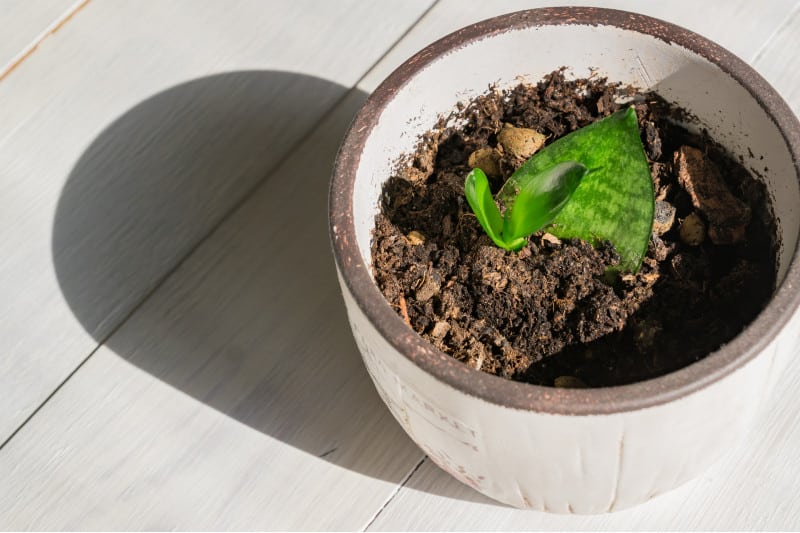
Now, we all know that you also want to reproduce this beauty even more. Worry not! We will give you how to propagate this Sansevieria zeylanica quickly through Leaf Cuttings.
Here’s how:
- Cut large, healthy leaves into 2″ to 3″ long sections.
- Allow the cuttings to air dry for a few hours.
- The cut ends of the leaf pieces should be dipped in water before being placed in a rooting hormone.
- Plant them in a damp potting mix that has two parts sand and one part peat.
- Alternatively, use a cactus or cacti combination.
- Place the newly planted leaf cuttings in a bright but indirect light source.
- Once the soil is nearly dry, water the new plants.
Growth Zone
Snake plants like temperate areas and can only survive the winter in USDA zones 9 to 11. I’ve seen people who used this vertical foliage as an outdoor plant or used as a fence, or even decorative in their patio in places in which winter season is not observed.
Potting
Select a container with a drainage hole in the bottom. Snake plants thrive in terra cotta pots, which allow the soil to dry out more quickly than plastic pots. The plant doesn’t need to be moved very often because, like many snake plants, it likes to be a little root-bound. Don’t bury snake plants too deeply while repotting them. The plant should be placed at the same depth as it was in its previous container.
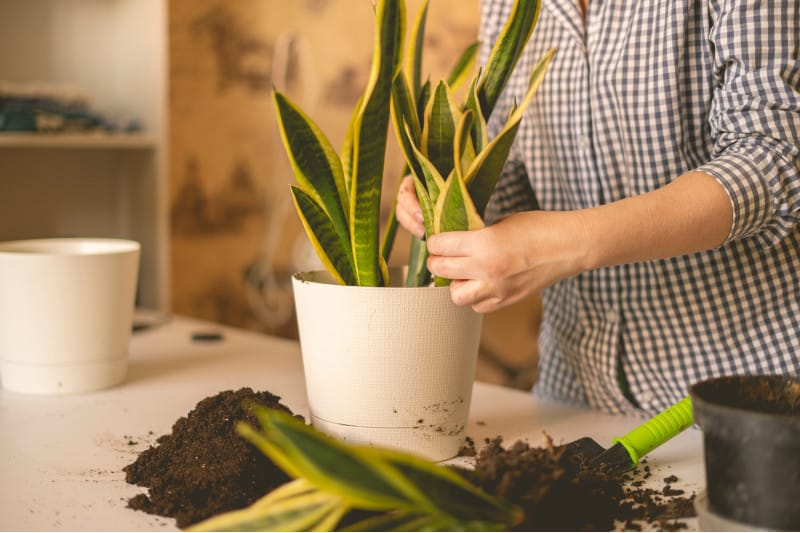
Pro tip: When your Sansevieria zeylanica starts to show signs of overcrowding or congestion, such as yellowing foliage or leaf loss, transplant it to a larger container.
Pruning
It doesn’t even need to be pruned regularly; merely remove damaged or dead leaves. Prune your Snake plant to improve its appearance by restoring its shape, reducing its size, and restoring its form. Using a sharp, sterile pair of pruners or a sharp knife, cut off selected leaves at the soil line. Damaged and mature leaves should be removed first.
The leaves may not be recovered if they have been severely injured by the cold. As the pot fills up, the leaves on the outside may start to tumble over. To maintain the plant’s healthy appearance, snip off the leaves with a sterile tool.
Wipe the leaves every now and then to keep them clean and free of grime.
Sansevieria Varieties and Similar Plants
Snake plants come in a variety of shapes and sizes. Each with its own name and physical characteristics. If you are looking for these kinds of plants, we also provide them for you!
They are:
Sansevieria trifasciata
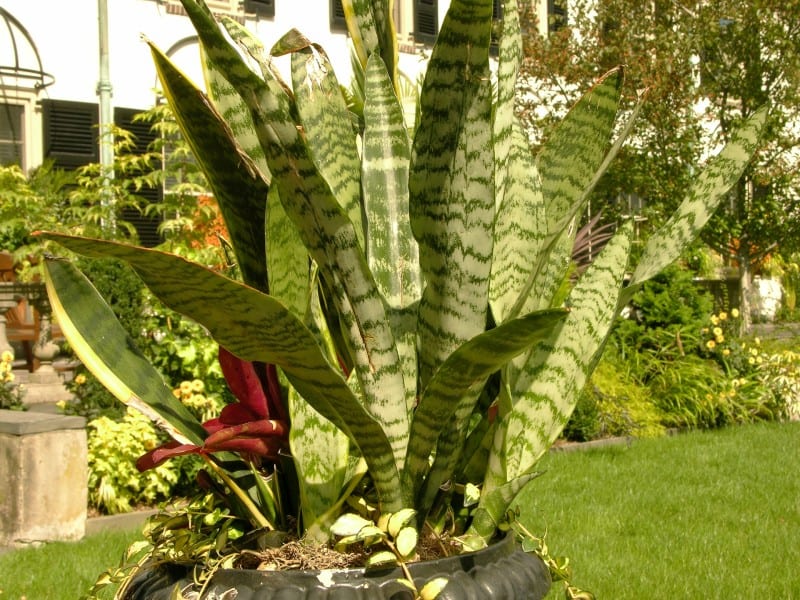
It is a stemless perennial succulent herb. It comes with a creeping rhizome that forms dense stands. Its sword-shaped leaves are dark green with horizontal stripes of bright greyish-green and grow vertically from a basal rosette.
Sansevieria hahnii
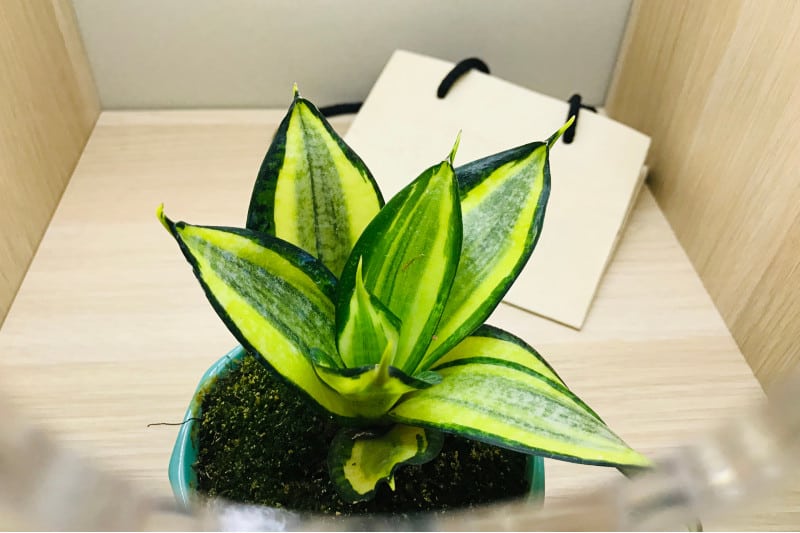
This beauty is a famous Bird’s Nest Snake Plant with a tiny size. The funnel-shaped black glossy leaves make an attractive rosette of lush succulent foliage with horizontal grey-green variegation. It also forms an elegant rosette of lush succulent foliage. Sansevieria can adapt to various light situations, although the colors are best in robust and filtered light.
Sansevieria cylindrica
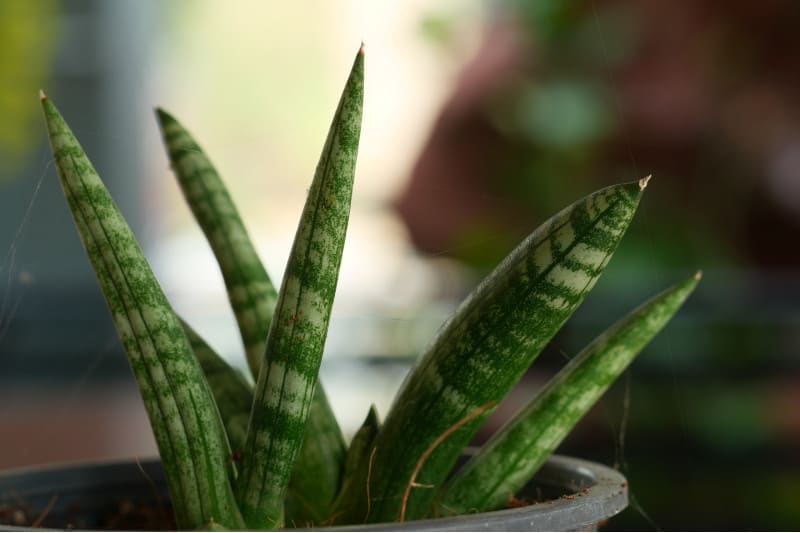
It is a strange-looking stemless succulent plant with stiff leaves sprouting from a basal rosette that becomes fan-shaped. It spreads by rhizomes, which are underground roots that grow offshoots at a distance from the main plant.
Sansevieria zeylanica Diseases & Pests
While bowstring hemp isn’t particularly susceptible to pests and diseases, mealybugs and spider mites can cause problems.
Plants that are heavily infested should be discarded since pest control will take a long time and you risk infecting other plants. However, if it’s still controllable, Mealybugs can be controlled by handpicking them or dabbing them with alcohol. Washing spider mites off the plant and boosting the humidity surrounding it are the best ways to get rid of them. Insecticidal and biological treatment are other options for both pests.
Southern blight and red leaf spot are two fungal diseases that can affect snake plants. The appearance of the plant might help you identify these issues. The leaves are usually the ones that are impacted. They may have sunken reddish-brown lesions or a white web-like growth that hardens and turns dark brown.
Because fungal infections can cause the snake plant to wilt, rot, and die, eliminating them should be a top focus.
Maintain proper grooming: such as keeping the leaves dry, keeping track of watering, and providing well-drained soil and ideal temperatures.
Frequently Asked Questions
Because of their lengthy leaves and tapered ends, Sansevieria types are commonly referred to as “snake plants.” And of those is the Sansevieria Zeylanica. It is a tall, robust snake plant with thinner leaves and pale variegation waves running along the edges
I know you’ll want to cultivate this houseplant right away after learning about these Snake Plant Benefits. Plus, it has been established in research and studies by leading companies!
Their benefits are:
- A fantastic houseplant for producing oxygen.
- Pollutants in the air are removed.
- During the night, it absorbs CO2.
- It requires little upkeep.
- It has anti-allergy properties.
When it comes to feng shui, some people say the Snake plant is bad. However, it is far from the truth. It brings protecting and cleansing energy to the home or offices if placed in the right spot.
Spiky plants are regarded as excellent against negative Chi in feng shui. Because they are so aggressive, you should keep them in less-travelled places. The Southeastern, Southern, and Eastern corners are some of the best places to visit.
You can now purchase this Zeylanica here at Plantly! No need to search far and wide because it is now in front of you. Message us directly, and let’s get started!
Whether you want to buy, sell or simply reach out to other plant enthusiasts, Plantly is the right place to be!


